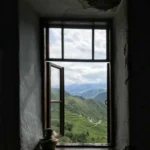Berlin’s name is often linked with its powerful symbol of division and unity: the Berlin Wall. The Berlin Wall Memorial stands as a solemn reminder of a divided past and the hope for freedom. This remarkable place offers visitors a chance to connect with a pivotal moment in 20th-century history. If you seek to understand Berlin’s story beyond its vibrant modern life, this memorial is a must-see. By exploring the memorial, you will discover layers of history, local culture, and the human spirit that shaped a city and the world.
Table of Contents
Tracing the Berlin Wall’s Silent Witness
Walking along the Berlin Wall Memorial, you can almost hear the echoes of footsteps from a time when the city was split in two. The memorial marks the original course of the Wall, preserved to show the physical and emotional barrier it created. This stretch along Bernauer Straße is unique because you can see the “death strip,” watchtowers, and the preserved sections of the wall along with a documentation center.
The Wall was erected in 1961 and lasted until 1989, symbolizing the Cold War’s harsh division between East and West Berlin. The Memorial is not just bricks and concrete; it tells stories of families separated, daring escapes, and the political tension that gripped the world. Walking here provides a quiet moment to contemplate freedom and resilience.
Why This Memorial Matters
Unlike other parts of the Berlin Wall scattered around the city, the Berlin Wall Memorial preserves the authentic historical landscape. It is the largest remaining stretch of the Wall left in its original condition, offering a genuine glimpse into the past. Educational exhibitions and preserved watchtowers deepen your understanding, making the visit both emotional and enlightening.
How to Reach the Berlin Wall Memorial Easily
Located in the northern part of central Berlin, the Berlin Wall Memorial is easy to get to from the city center. From Alexanderplatz, take the U8 subway line toward Wittenau and get off at Bernauer Straße station. The memorial is a short walk from there.
If you arrive from Berlin Brandenburg Airport, take the regional train (RE7 or RB14) to Alexanderplatz, then switch to the U8 subway line. The journey usually takes around 45 minutes.
For those arriving at Berlin Hauptbahnhof (central train station), you can take tram M10 directly to the memorial area, or a quick subway ride plus a walk will get you there comfortably.
Nearby Places to Stay and Dine
The surrounding district of Mitte provides a variety of lodging options, from cozy guesthouses to modern apartments. Staying nearby allows you to experience the calm yet vibrant atmosphere of this historic neighborhood.
After walking the Berlin Wall Memorial, you might want to explore Berlin’s iconic landmarks and taste its local flavors to get a fuller sense of the city’s spirit.
After your visit, try local Berlin dishes such as currywurst or döner kebab at nearby eateries. The neighborhood has a mix of casual street-food vendors and charming cafés where you can rest and soak in Berlin’s lively spirit.
Best Time to Visit for a Meaningful Walk
Visiting the Berlin Wall Memorial early in the morning on weekdays offers a peaceful experience, free from heavy crowds. Spring and autumn bring mild weather, ideal for wandering outdoors while absorbing the atmosphere. Summers can be busy with tourists, but the extended daylight hours are great for longer visits.
On public holidays or weekends, the memorial and its exhibitions see more visitors. To avoid waiting times, plan your visit midweek if possible.
Weather and Seasonal Tips
Bring comfortable shoes since you will be walking quite a bit. In colder months, dressing in layers helps, and the memorial’s outdoor parts might be less pleasant if it rains heavily, though the documentation center offers shelter and insight.
Understanding the Memorial Through Guided Tours
The Berlin Wall Memorial offers guided tours that bring stories to life with detailed explanations and personal anecdotes from history. Joining a tour is highly recommended if you want a deeper understanding of the events and meanings behind the Wall’s construction, life during the division, and its ultimate fall.
Reservations for tours can be made through the memorial’s official website or onsite, though booking in advance ensures a spot, especially in peak seasons. Tours are available in several languages, including English and German, accommodating international visitors.
What to Expect from a Tour
- Expert guides sharing lesser-known facts and personal stories
- Visits to key sites like the preserved Wall, watchtower, and exhibitions
- Insight into escape attempts and daily life on both sides of the Wall
- Time to ask questions and reflect during the walk
More Than a Memorial: A Place of Reflection and Learning
What makes the Berlin Wall Memorial truly remarkable is its balance between historical weight and human stories. It is not only a site of remembrance but also a place to celebrate freedom and peace. The memorial hosts educational programs, art installations, and events commemorating those affected by the Wall.
Visitors often find themselves moved by the simplicity of the memorial’s design and the powerful message it carries. It’s a space that invites quiet thought, encouraging us to value connection and unity in a world sometimes divided by walls.
Official Website and Visitor Information
For current opening hours, guided tour bookings, and special exhibits, please refer to the official Berlin Wall Memorial. The site offers detailed visitor information in German and English, ensuring your visit will be smooth and well planned.
Remember, the entrance to the outdoor memorial is free, but donations and purchases support the maintenance and educational efforts of the site.

Eastern Europe travel specialist uncovering hidden gems from the Baltics to the Balkans.
- Germany-04318 – Berlin Wall Story (30300790166) by Dennis G. Jarvis on Wikimedia Commons – cc by-sa 2.0
